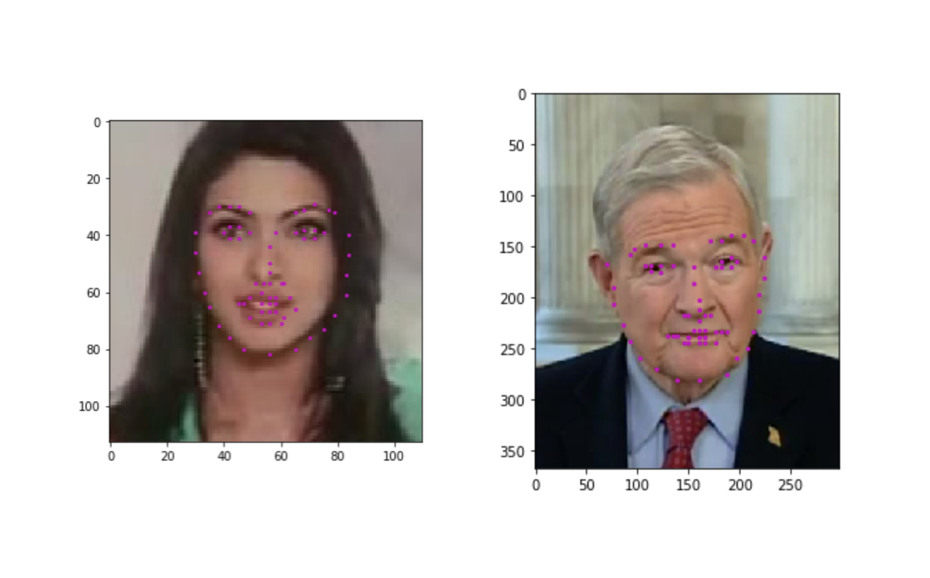Facial Keypoint Detection
Project Overview
In this project, I combined my knowledge of computer vision techniques and deep learning architectures to build a facial keypoint detection system. Facial keypoints include points around the eyes, nose, and mouth on a face and are used in many applications. These applications include: facial tracking, facial pose recognition, facial filters, and emotion recognition. The completed code should be able to look at any image, detect faces, and predict the locations of facial keypoints on each face; examples of these keypoints are displayed below.
Notebook 1 : Loading and Visualizing the Facial Keypoint Data
Notebook 2 : Defining and Training a Convolutional Neural Network (CNN) to Predict Facial Keypoints
Notebook 3 : Facial Keypoint Detection Using Haar Cascades and your Trained CNN
Notebook 4 : Fun Filters and Keypoint Uses
Project Instructions
Before you can get started coding, you'll have to make sure that you have all the libraries and dependencies required to support this project.
- Clone the repository, and navigate to the downloaded folder. This may take a minute or two to clone due to the included image data.
git clone https://github.com/ismlkrkmz/facial-keypoint-detector.git
cd facial-keypoint-detector
-
Create (and activate) a new environment, named
cv-ndwith Python 3.6. If prompted to proceed with the install(Proceed [y]/n)type y.- Linux or Mac:
conda create -n cv-nd python=3.6 source activate cv-nd- Windows:
conda create --name cv-nd python=3.6 activate cv-ndAt this point your command line should look something like:
(cv-nd) <User>:facial-keypoint-detector <user>$. The(cv-nd)indicates that your environment has been activated, and you can proceed with further package installations. -
Install PyTorch and torchvision; this should install the latest version of PyTorch.
- Linux or Mac:
conda install pytorch torchvision -c pytorch- Windows:
conda install pytorch-cpu -c pytorch pip install torchvision -
Install a few required pip packages, which are specified in the requirements text file (including OpenCV).
pip install -r requirements.txt
Data
After uncomment and run first cell of the first notebook, all of the data you'll need to train a neural network will be in the facial-keypoint-detector repo, in the subdirectory data. In this folder are training and tests set of image/keypoint data, and their respective csv files. This will be further explored in Notebook 1: Loading and Visualizing Data.
Notebooks
- Navigate back to the repo. (Also, your source environment should still be activated at this point.)
cd
cd facial-keypoint-detector- Open the directory of notebooks, using the below command. You'll see all of the project files appear in your local environment; open the first notebook and follow the instructions.
jupyter notebook- Once you open any of the project notebooks, make sure you are in the correct
cv-ndenvironment by clickingKernel > Change Kernel > cv-nd.
LICENSE: This project is licensed under the terms of the MIT license.
